Jiran Kohout architekti: searching for balance
The architectural studio Jiran Kohout architekti (JK/A) was founded in several stages. At the beginning of the 1990s, the architects Zdeněk Jiran and Michal Kohout were working in the legendary SIAL studio in Liberec, which they left when it broke down in 1991. In the course of time they cooperated with Alena Šrámková, Petr Bouřil and Vítek Máslo and in 1995 they decided to establish Jiran Kohout architekti. Today the studio is seated in an administration complex in Holešovice, Prague.
“Our beginnings are to a large degree associated with the Pražská energetika (Prague Power Utility) headquarters project. At that time it was one of the biggest new-built administration centres in our country,” Zdeněk Jiran recalls the beginnings of the company. Until now, the firm has prepared hundreds of projects, dozens of them implemented, and has received numerous awards at domestic as well as international contests. Just like any other larger studio, JK/A has a rather broad scope of activity – from public contracts (schools, social services, self-government buildings etc.), obtained usually in public procurement procedures, to residential projects and lately also urban projects. Neither of the two founders perceives any of the studio’s historical projects as significantly better than others. “There’s no doubt the reconstruction projects for Prague’s Academy of Fine Arts and for the České Budějovice City Hall were interesting. Both buildings are protected monuments, yet the builder required an enlargement of their capacity. It was a huge technical challenge. We like such complicated situations,” Jiran at least partly hints at his studio’s major specialization. It is obvious from the words of both of JK/A’s founders on this issue that the precisely formulated style of work matters more than a clear-cut aesthetic style. For the studio, each project is a well-balanced synthesis of contemplations and requirements made by the contractor, the builder and the architect with three major pillars: purpose – means – representation. However, the synthesis is always one of a kind, unique – because that could be said about the location in which the building is set.
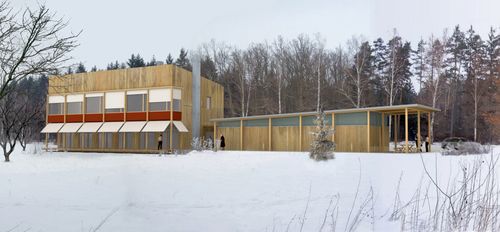
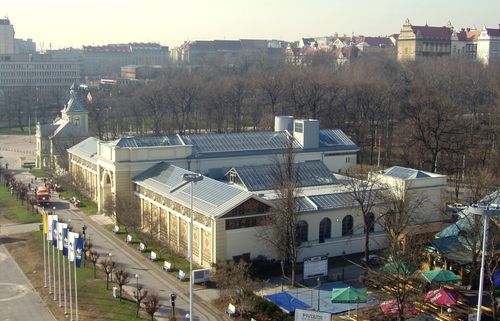
Architecture with dynamic rules
“Each change that is not to the better, is to the worse,” – this quotation by Adolf Loos serves as the basic guideline in JK/A. Through these words, the studio follows up on traditions and in this context uses “natural” rules, procedures and solutions well-tested by actual practice and history, while observing and admitting innovation. “In our work we respect building typology. Architecture, just like any field of human activity, has its own language, and it cannot be used arbitrarily, as it would result in an incomprehensible world,” says Michal Kohout. At the same time he refuses a rigid, dogmatic approach to well-established architectural tenets: “The design of a building should basically correspond with its purpose, but the rules for its declaration are changing in the course of time. It is also necessary to bear in mind the location, which is one of a kind, so it is not possible to simply copy solutions used elsewhere. Last but not least, it is up to the builder how he wants to present the building’s functions, which depends on his personality – there are always several ‘right’ solutions here.”
Function, purpose, operation, user – these are terms used extensively in JK/A. “Our first priority is to explore our client’s needs. Being able to help him formulate them is optimal for us and we enjoy that. Our goal is to satisfy these needs and put them in balance with other building elements. Some people see aesthetics as the most important aspect, others technology; we are trying to choose the shape and design based on the building’s purpose. The form is inspired by the purpose.” – this is the studio’s main motto, according to Michal Kohout.
Rules are one thing, their observance is something else. In this respect Jiran and Kohout are absolutely clear – JK/A is an authors’ studio. “Every contract is managed and monitored by one of us, and our company is divided into four groups. Today there are about twenty of us and even though from an economic point of view we could hire more employees, we aren’t going to do it. It would almost definitely result in a loss of control over each project. We want to create architecture, not work as managers to other architects,” says Jiran.
This system of work determines to some extent the age structure of the studio’s employees. Young architects prevail, with an occasional foreigner among them (“it freshens up our little pond – it’s a different wind and a mirror for each of us”), right now a Portuguese and a German. The age structure of JK/A’s employees is determined by another factor as well. “When you’re young, you’re carried on the wave of the time, but as you’re getting closer to forty, you are up against a change. This age brings the needed experience, responsibility and consequently ability to mobilize your own potential. Each architect has some, but is not always able to develop it – some petrify and repeat patterns from their youth, some succumb to fads,” says Kohout. However, both founders say that we have always had good architects here. “To a large extent we have to credit our predecessors, for example Lábus, Línek and Pleskot. And directly teachers at our schools – Alena Šrámková, Emil Přikryl, Jiří Suchomel, Miroslav Šik and the late Martin Roubík.”
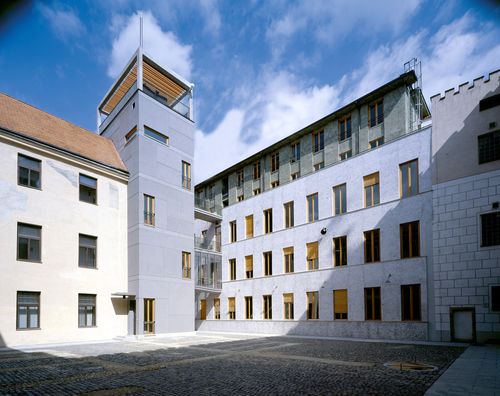
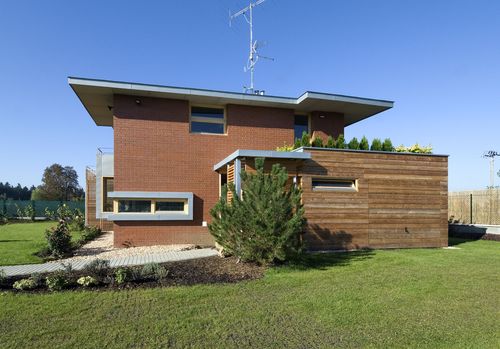
Social market realism
“We have been always interested in the broader social context. Architecture is not somewhere beyond society. You have history, social development, politics and many other things here. We are trying to reflect all of this in our work. If you ask me about the style of our studio, I would talk about ‘user- and community-oriented’ architecture – I don’t know an adequate Czech expression, but this should be understandable,” Kohout gives another definition of the studio’s work, once again referring to its style of work or approach to projects. To some degree they are already implied by the architects’ role models – Adolf Loos, Aldo van Eyck, Ralph Erskine, but also Ignasi De Sola Morales and Hans van der Laan. Maybe it is because of these basic assumptions for work and general thinking that you will not hear the traditional complaints from the Holešovice studio. Unqualified customers, of whom developers in the first place care only about profits? “Working with real professionals is good. They know exactly what they want and are able to define their needs and plans. In this situation we often represent the aspect of the end user, so evidently from time to time there are conflicts. But a professional developer won’t dare to ignore the user, so the disputes are usually not fatal,” Kohout comments on their relationships with development companies, marred by problems in other studios. He obviously does not consider conflicts between profit-seeking investors and architects a fundamental parameter for architectural operations in the Czech Republic: “These are mostly misunderstandings, often with a personal background. We also had to withdraw from a project due to principal disagreements, but in the same way we also had to correct our views several times. No project has a single ideal solution, the final choice always has to come from all stakeholders – and in this respect the architect is not in a more prominent position than the builder or the contractor.”
Unlike many other studios, JK/A does not prefer the public sector as a customer, even though it is often deemed as the only client that gives architects real freedom for top-quality work, because its ties to economic utilitarianism are not so firm. “We have undertaken projects for the public sector, such as rest homes, city halls, schools of arts, where cooperation with the tendering authority was excellent. As I have said, each project is always a higher personal matter and everything depends on the people you meet, not really on the institution those people come from. However, we often encounter little responsibility for entrusted funds and resources in the public sector and in self-government. And that’s why there are many pressures at play, which I really don’t want to understand in essence,” says Kohout.
Both founders of the Holešovice studio also exercise restraint and realism when it comes to the rewards for architects and the frequently claimed non-compliance with the Compensation Decree. “It is the architect’s task to explain to the customer what I’m doing for him, what values I’m bringing, why and how much it should cost. Nobody will do that for us,” says Jiran.
It looks like intense awareness and perception of the economic reality is a fundamental guideline for approach to practical and theoretical issues in the studio. In the same way they approach the lasting controversy – Kaplický’s library. “In Prague, this building would be something like Ferrari and the question is if we would be able to produce and use this car here. And if it is what we really need at present. All in all, the progress of the award procedure is self-evident,” says Kohout, adding: “However, such a unique and exceptional feat always moves things forward.” The JK/A realists seem to always take into consideration not just the existing conditions and status of things, but their development as well.
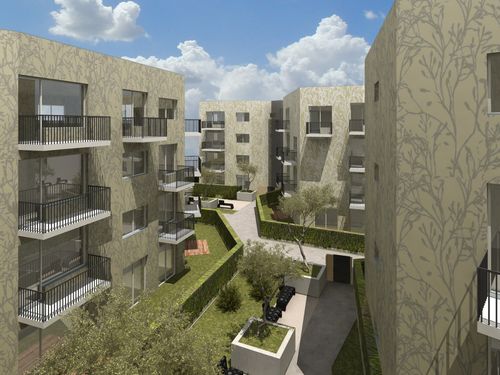
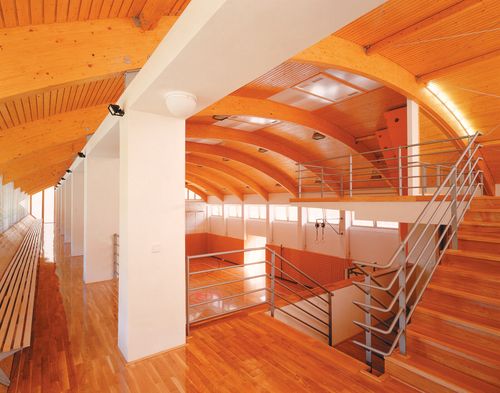
Legend:
1. Liberec rest home (photo by P. Štecha)
2. Lesy Písek building
3. Modern building of Prague’s Academy of Fine Arts (photo by Patrik
Hovme)
4. České Budějovice city hall (photo by Pavel Štecha)
5. Family house in Křeslice (photo by Ester Havlová)
6. Residence for the Sluníčková Zahrada project, Lysá nad Labem
7. School of Arts and Industry, Železný Brod (photo by Ester Havlová)



 Jagg.cz
Jagg.cz Linkuj.cz
Linkuj.cz Google Bookmarks
Google Bookmarks Live bookmarks
Live bookmarks Digg
Digg Del.icio.us
Del.icio.us MySpace
MySpace Facebook
Facebook